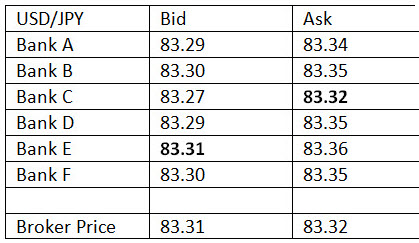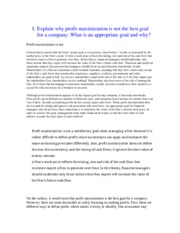What is debt-to-equity ratio? Sage Advice US
Contents:


A low debt ratio also means that the company has more equity, which gives it more money to invest in its business. This can be a good sign for investors, as it indicates that the company is stable and has a good chance of growing in the future. Below is a short video tutorial that explains how leverage impacts a company and how to calculate the debt/equity ratio with an example. A high debt-equity ratio can be good because it shows that a firm can easily service its debt obligations and is using the leverage to increase equity returns. The sum of short-term debt, long-term debt, and other fixed payment obligations of a business that are incurred while under normal operating cycles. Creating a debt schedule helps split out liabilities by specific pieces.
- Total debts include bank loans, lines of credit taxes payable, and accounts payable.
- However, each industry uses its own benchmarks for debts, with 0.5 being an okay ratio.
- Assume that a corporation’s balance sheet reports total liabilities of $60,000 and total assets of $100,000.
- Doing so reveals the existence of any issues where the debt load of an entity is increasing over time, or where its ability to repay debt is declining.
Basically the debt quotient shows a business’s ability to pay its liabilities with its own assets. In other words, it shows how much of its assets the company has to sell to pay all liabilities. Debt ratios measure the extent to which an organization uses debt to fund its operations. They can also be used to study an entity’s ability to pay for that debt.
Debt-to-Equity Ratio
It can be interpreted as the part of a company’s assets that’s financed with debt. The debt ratio is essentially a comparison of total debts to total assets. The calculation takes short-term and long-term assets into account. This information is often used by investors, analysts, and potential lenders to assess part of a company’s financial health. The debt to equity ratio is a more stringent measure of debt relative to equity than the debt to total assets ratio. The debt to equity ratio takes into account the company’s total liabilities, while the debt to total assets ratio takes into account the company’s total assets.
Calculating a grant accounting‘s debt to equity ratio is straight forward, and the debt and equity components can be found on a company’s respective balance sheet. This is summarized by their leverage ratio, which is the ratio of total debt to total equity. In addition, high debt to assets ratio may indicate low borrowing capacity of a firm, which in turn will lower the firm’s financial flexibility. Debt ratios measure the firm’s ability to repay long-term debt. This means they expect you to be able to make your mortgage payments on time each month for the rest of the loan’s term. If you can’t and you default on the loan, the lender risks losing money.

If it’s below 43%, you’ll likely find it easy to qualify for a mortgage. By figuring out where your DTI stands, you’ll be better able to decide if now is the time to buy a home. However, if your ratio is low, you can take advantage of the fact and apply for a home loan. When considering mortgage applications, lenders want to make sure borrowers are qualified for the loan before issuing it. IG International Limited is part of the IG Group and its ultimate parent company is IG Group Holdings Plc.
Analyzing long-term liabilities combines debt ratio analysis, credit analysis and market analysis to assess a company’s financial strength. You can calculate your DTI by adding up your monthly minimum debt payments and dividing it by your monthly pretax income. The DTI ratio also provides you with a good snapshot of your current financial health. If it’s below 35%, you’re in a good position to take on new debt and pay it off with regularity. But when it’s over 50%, you should try to reduce the number of debt obligations or find ways to generate more income. When your DTI falls between 35% and 50%, you’ll usually be eligible for some approvals.
From Better Money Habits
That can lead to greater earning volatility due to additional interest expenses. Overall, the debt ratio helps investors, analysts and lenders better understand the financial risk level of a company’s acquired debt. To truly understand what a good debt to assets ratio is, you’ll need to know what the industry average is. From there you can determine if the company you’re assessing is higher or lower compared to that average. The debt ratio is a metric used in accounting to determine how much debt a company leverages to finance its operations and assets.

A https://1investing.in/ of 0.5 (or 50%) means that 50% of the company’s assets are financed using debt . A company’s debt ratio can be calculated by dividing total debt by total assets. The current ratio is a financial ratio that measures whether or not a firm has enough resources to pay its debts over the next 12 months. For example, a company with $2 million in total assets and $500,000 in total liabilities would have a debt ratio of 25%.
Understanding the Total-Debt-to-Total-Assets Ratio
We also use the calculation to determine the extent of a consumer’s leverage. The debt to equity ratio is calculated by dividing the total amount of debt by the total amount of equity. The intent is to see if funding is coming from a reasonable proportion of debt. Total-debt-to-total-assets is a measure of the company’s assets that are financed by debt rather than equity.
Assume that a corporation’s balance sheet reports total liabilities of $60,000 and total assets of $100,000. The corporation’s debt ratio is 0.60 or 60% ($60,000 divided by $100,000). Like all liquidity ratios, the debt ratio is important to both creditors and investors.
Hertz may find the demands of investors are too great to secure financing, turning to financial institutions for its capital instead. Google is not weighed down by debt obligations and will likely be able to secure additional capital at potentially lower rates compared to the other two companies. Although its debt balance is more than three times higher than Costco, it carries proportionally less debt compared to total assets compared to the other two companies.
Showing up to the office from 9 – 5 every day Riley has earned her living through hours of study, analysis, and application. To Riley, the principals of accounting are useful for both professional and personal uses. We strive to provide you with information about products and services you might find interesting and useful.
Total assets include property, equipment, goodwill, and accounts receivable. A technology company like Google, for example, does not need a lot of physical assets to sell its products. Total assets are the sum of current assets, plus fixed assets, as well as all other assets. For example, ‘goodwill’ is an asset.‘Goodwill’ is a company’s established reputation – it is a quantifiable asset.
Mondelez International’s Debt Overview – Mondelez International … – Benzinga
Mondelez International’s Debt Overview – Mondelez International ….
Posted: Thu, 13 Apr 2023 20:47:00 GMT [source]
Designed for freelancers and small business owners, Debitoor invoicing software makes it quick and easy to issue professional invoices and manage your business finances. Start invoicing with SumUp today and gain access to additional tools to run your business. Skylar Clarine is a fact-checker and expert in personal finance with a range of experience including veterinary technology and film studies.
Harold Averkamp has worked as a university accounting instructor, accountant, and consultant for more than 25 years. He is the sole author of all the materials on AccountingCoach.com. Leverage Traders use leverage to get bigger returns from small investments.
Video – Debt ratio
It means that the company has twice as many assets as liabilities. In other words, the liabilities of this company are only 50 per cent of its total assets. Basically, only the creditors own half the business’s assets, while the company’s shareholders own the rest. The debt ratio is shown as a decimal because it calculates the total liabilities as a percentage of the total assets. As is the case for many solvency ratios, a lower ratio is better than a higher one. A ratio greater than 1 shows that a large part of the assets is financed by debts.
What Does Fastenal’s Debt Look Like? – Fastenal (NASDAQ:FAST) – Benzinga
What Does Fastenal’s Debt Look Like? – Fastenal (NASDAQ:FAST).
Posted: Tue, 11 Apr 2023 15:16:18 GMT [source]
Besides his extensive derivative trading expertise, Adam is an expert in economics and behavioral finance. Adam received his master’s in economics from The New School for Social Research and his Ph.D. from the University of Wisconsin-Madison in sociology. He is a CFA charterholder as well as holding FINRA Series 7, 55 & 63 licenses. He currently researches and teaches economic sociology and the social studies of finance at the Hebrew University in Jerusalem. These articles and related content is the property of The Sage Group plc or its contractors or its licensors (“Sage”). Please do not copy, reproduce, modify, distribute or disburse without express consent from Sage.
A Look Into Horizon Therapeutics’ Debt – Horizon Therapeutics … – Benzinga
A Look Into Horizon Therapeutics’ Debt – Horizon Therapeutics ….
Posted: Wed, 12 Apr 2023 14:01:41 GMT [source]
Starbucks listed $998.9 million in short-term and current portion of long-term debt on its balance sheet for the fiscal year ended. As noted above, a company’s debt ratio is a measure of the extent of its financial leverage. Capital-intensive businesses, such as utilities and pipelines tend to have much higher debt ratios than others like the technology sector.
DTIs between 36% and 41% suggest that you have manageable levels of debt in relation to your income. However, larger loans or loans with strict lenders may like to see you pay down some of this debt to reduce your DTI ratio before you earn their approval. The larger the debt ratio the greater is the company’s financial leverage. The appropriate debt ratio depends on the industry and factors that are unique to the company. The debt ratio indicates the percentage of the total asset amounts that is owed to creditors.
